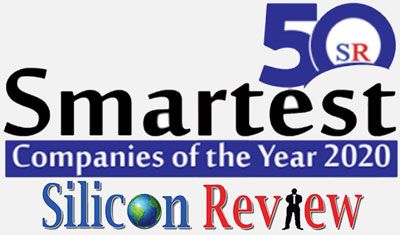 When the COVID-19 pandemic first hit, many businesses scrambled to quickly make the switch to having and supporting a work from home (WFH) workforce. Now, after months of managing this, most organizations fall into one of two categories:
When the COVID-19 pandemic first hit, many businesses scrambled to quickly make the switch to having and supporting a work from home (WFH) workforce. Now, after months of managing this, most organizations fall into one of two categories:
- They’re still struggling to get it right
- They think they have everything dialed in—and are blissfully unaware of the problems that are lurking and festering out of view
Whichever category your organization falls into, CIO Professional Services’ Remote Working Assessment can help ensure that all aspects of your WFH program are working as well as possible.
WFH is all about people, processes and technology
As you have no doubt discovered, there’s a lot more to having a WFH workforce than simply sending everyone home and telling them to “carry on as usual” from a different locale.
For example, just looking at top-level issues… Working from home makes collaboration more difficult and can cause morale to plummet (especially if your “fun workplace” used to be a big draw). Processes that worked well in the office may need to be completely revamped for a distributed workforce. Technology can create serious security risks.
Once you dive below the surface, even more questions arise. For example:
- Are your managers doing a good job enabling and supporting your WFH workforce?
- How has WFH impacted cross-team initiatives?
- What is the long-term impact on your office space needs?
- What’s the best way to provide secure networking for thousands of unique endpoints directly to the cloud without VPN?
- How do you provide high-quality technology support?
- Do your WFH folks need periodic access to your facilities? If so, how often? For what? How will this impact security issues, pandemic-related safety issues, etc.?
- Looking ahead, what is the “new normal” likely to be—and what do you need to do to get there?
And the list goes on.
Our Remote Working Assessment can make a significant difference
CIO Professional Services’ Remote Working Assessment gives you a complete 360° look at where you’re at today, plus a roadmap for getting to a better place.
If you’re struggling to get things right, this assessment will help pinpoint the problems and give you solutions. If you think things are just fine as is, this assessment may open your eyes to issues your internal surveys did not uncover (because, as it turns out, employees are hesitant to mention problems when their boss asks “how’s WFH going for you?”).
The Remote Working Assessment goes deep to get candid, honest answers regarding how everyone really feels about WFH. What issues and challenges are they finding most vexing? What positives are they discovering? How is WFH impacting them personally? How do they see it impacting their department and the company as a whole?
Assessment components include:
- Kickoff session with executive/senior managers, using a facilitated virtual group discussion methodology.
- Overall review of your organization’s policies, documents and communications regarding WFH.
- Management surveys to learn about company policies, culture and attitudes regarding remote workers. This survey includes both quantitative analysis and open-ended questions, all asked through a unique anonymous online brainstorming tool that allows participants to reflect on and respond to, the ideas presented by others.
- Employee surveys using the same online brainstorming tool. The survey for WFH employees focuses on understanding the people, process and technology issues and concerns of workers who are working from home. If some of your workers are not working from home, they can also be surveyed to gain perspective on the challenges they face in this hybrid environment.
- Facilitated discussions with smaller groups of managers and remote employees to further explore issues raised in the surveys and gather additional ideas and opinions.
- Analysis of assessment input to pinpoint problem areas, highlight successes and assess your existing capabilities and situation against leading industry practices.
- Multiple Deliverables based on all of the above. You’ll get a Summary Report of the assessment results that can be distributed to all survey participants. A comprehensive Management Report and detailed analysis of assessment findings will be presented to your executive team, along with a set of proposed actions for improving the WFH environment, organized by “quick win,” near-term and long-term initiatives.
The end result: You’ll have a clear understanding of the current state of your WFH infrastructure, culture, policies and impact. And you’ll have the information and plans you need to ensure that work from home is truly working for your organization.
Get started now
To schedule a time to discuss your organization's needs, This email address is being protected from spambots. You need JavaScript enabled to view it. or call 650-353-5855.
 By Ed Caufield, Distinguished Alumni
By Ed Caufield, Distinguished Alumni
 By Naidu Annamaneni
By Naidu Annamaneni By Rameysh Ramdas
By Rameysh Ramdas By Naidu Annamaneni
By Naidu Annamaneni Silicon Review’s interview with Jeff Richards, Managing Partner
Silicon Review’s interview with Jeff Richards, Managing Partner By David Haedtler, Principal
By David Haedtler, Principal By Stephen McGrady
By Stephen McGrady
 By Stephen McGrady
By Stephen McGrady
